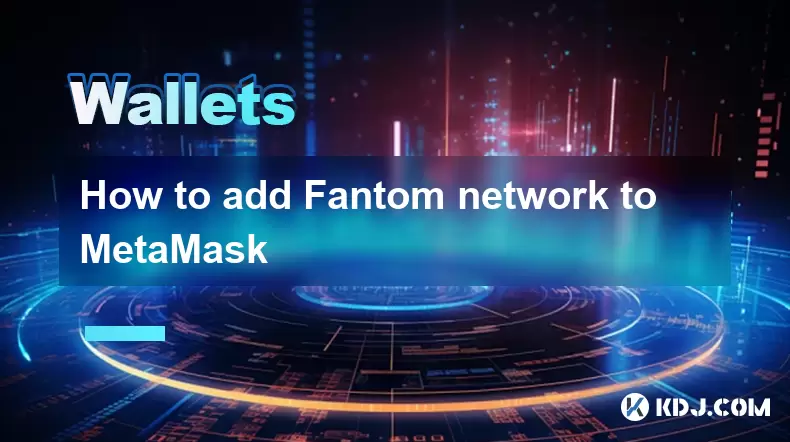-
 Bitcoin
Bitcoin $115000
0.88% -
 Ethereum
Ethereum $3727
2.86% -
 XRP
XRP $3.001
2.15% -
 Tether USDt
Tether USDt $1.000
0.03% -
 BNB
BNB $765.7
0.59% -
 Solana
Solana $169.5
3.52% -
 USDC
USDC $0.9999
0.00% -
 TRON
TRON $0.3391
1.24% -
 Dogecoin
Dogecoin $0.2059
2.68% -
 Cardano
Cardano $0.7418
2.24% -
 Hyperliquid
Hyperliquid $37.92
1.29% -
 Stellar
Stellar $0.4017
2.54% -
 Sui
Sui $3.508
2.67% -
 Chainlink
Chainlink $16.87
2.81% -
 Bitcoin Cash
Bitcoin Cash $569.4
2.08% -
 Hedera
Hedera $0.2472
0.22% -
 Ethena USDe
Ethena USDe $1.001
0.01% -
 Avalanche
Avalanche $22.29
1.22% -
 Litecoin
Litecoin $118.0
0.74% -
 UNUS SED LEO
UNUS SED LEO $8.924
-0.75% -
 Toncoin
Toncoin $3.236
1.65% -
 Shiba Inu
Shiba Inu $0.00001238
1.79% -
 Uniswap
Uniswap $9.827
3.02% -
 Polkadot
Polkadot $3.684
1.92% -
 Dai
Dai $1.000
0.01% -
 Monero
Monero $283.0
-2.73% -
 Bitget Token
Bitget Token $4.362
0.47% -
 Cronos
Cronos $0.1458
4.97% -
 Pepe
Pepe $0.00001054
2.58% -
 Ethena
Ethena $0.6238
9.53%
How to review smart contract code?
To effectively review smart contract code, begin by understanding its purpose, functionality, and underlying blockchain environment.
Feb 23, 2025 at 05:24 pm

Key Points
- Understanding Smart Contract Code
- Static Analysis Tools
- Dynamic Analysis Tools
- Formal Verification
- Best Practices for Smart Contract Code Review
How to Review Smart Contract Code
1. Understanding Smart Contract Code
Before conducting a detailed review, it's crucial to develop a comprehensive understanding of the smart contract under examination. This knowledge encompasses grasping the purpose, functionality, and operational logic of the contract. Reviewing documentation, reading the source code thoroughly, and comprehending the underlying blockchain environment are essential steps in establishing this foundational understanding.
2. Static Analysis Tools
Static analysis tools provide a comprehensive approach to scrutinizing smart contract code. These automated instruments methodically examine the source code, searching for potential bugs, vulnerabilities, and adherence to best practices. Tools like Slither and SmartCheck leverage static analysis techniques to identify issues related to integer overflow, reentrancy, gas consumption, and security concerns.
3. Dynamic Analysis Tools
Dynamic analysis tools complement static analysis by examining smart contract code during its execution. These tools simulate real-world interactions with the contract, testing its functionality under various conditions to unveil potential runtime errors or edge cases. Truffle's Solidity coverage tool and Echidna are examples of dynamic analysis tools widely employed within the blockchain development community.
4. Formal Verification
Formal verification offers the most rigorous method of reviewing smart contract code. Mathematical techniques and theorem proving are utilized to establish formal specifications that define the intended behavior of the contract. Automated tools verify the contract's actual behavior against these specifications, providing a high level of assurance regarding its correctness. However, formal verification remains a complex methodology that demands specialized expertise and the implementation of well-defined formal specifications.
5. Best Practices for Smart Contract Code Review
Observing best practices contributes significantly to the effectiveness of smart contract code reviews. Establishing clear coding standards, adhering to secure programming guidelines, and employing unit testing frameworks are essential components of a robust review process. Additionally, conducting regular audits by external experts and involving multiple reviewers with diverse perspectives enhances the thoroughness and objectivity of the review.
FAQs
What are the common vulnerabilities found in smart contract code?
Smart contracts are susceptible to a range of vulnerabilities, including reentrancy attacks, integer overflows, and phishing scams. Failure to validate user inputs, lack of access control mechanisms, and inadequate gas estimation can also lead to vulnerabilities.
How can I protect myself from smart contract scams?
To safeguard against smart contract scams, it's imperative to evaluate the credibility of the project, scrutinize the contract code for potential vulnerabilities, and verify the authenticity of the smart contract address. Maintaining vigilance and exercising caution when interacting with smart contracts is also crucial.
What resources are available for learning about smart contract code review?
A wealth of resources is available to assist individuals in learning about smart contract code review. Online documentation, webinars, and specialized courses offer valuable insights into the techniques and tools involved in the review process. Additionally, engaging in code review with experienced developers through open-source platforms can provide practical hands-on experience.
How frequently should I review my smart contract code?
Regular reviews of smart contract code are crucial to maintain its security and functionality. The frequency of reviews should be based on the criticality of the contract and its potential impact. It's recommended to conduct thorough reviews before deployment and periodically thereafter, especially following any significant changes or updates to the code.
Disclaimer:info@kdj.com
The information provided is not trading advice. kdj.com does not assume any responsibility for any investments made based on the information provided in this article. Cryptocurrencies are highly volatile and it is highly recommended that you invest with caution after thorough research!
If you believe that the content used on this website infringes your copyright, please contact us immediately (info@kdj.com) and we will delete it promptly.
- IREN Overtakes: A New King in the Bitcoin Miner Hashrate Race?
- 2025-08-07 16:31:29
- Memecoins Mania: Whales Eye Pepe Dollar (PEPD) as Bonk Cools Off, While MoonBull Hogs the Spotlight!
- 2025-08-07 16:51:17
- Unilabs, PEPE, and Investment Risk: Navigating the Crypto Hype
- 2025-08-07 16:31:29
- Meme Coin Mania: Rug Pulls, CZ-Inspired Tokens, and the Wild West of Crypto
- 2025-08-07 16:57:14
- HashFlare Founders Face the Music: Jail Time Looms?
- 2025-08-07 14:30:12
- Pepeto's Pounce: Meme Coin Mania Meets Blockchain Infrastructure
- 2025-08-07 15:10:12
Related knowledge

How to add Fantom network to MetaMask
Aug 07,2025 at 08:21am
Understanding the Fantom Network and MetaMask IntegrationThe Fantom network is a high-performance, scalable, and secure blockchain platform designed f...

How to update the firmware on your Trezor wallet
Aug 07,2025 at 05:00pm
Understanding the Role of Staking in Cryptocurrency EcosystemsStaking has become a fundamental component of many blockchain networks that operate unde...

How to export your transaction history from Coinbase Wallet
Aug 07,2025 at 06:50am
Understanding Coinbase Wallet and Transaction HistoryCoinbase Wallet is a self-custodial cryptocurrency wallet that allows users to store, manage, and...

How to export your transaction history from Coinbase Wallet
Aug 07,2025 at 08:49am
Understanding Coinbase Wallet and Transaction HistoryCoinbase Wallet is a self-custodial cryptocurrency wallet that allows users to store, manage, and...

How to avoid crypto wallet scams
Aug 07,2025 at 02:21pm
Understanding Common Types of Crypto Wallet ScamsCrypto wallet scams come in various forms, each designed to exploit user trust, technical ignorance, ...

How to set up a new Ledger Nano S Plus
Aug 07,2025 at 06:01am
Unboxing and Initial InspectionWhen you receive your Ledger Nano S Plus, begin by carefully unboxing the package. Inside, you should find the Ledger N...

How to add Fantom network to MetaMask
Aug 07,2025 at 08:21am
Understanding the Fantom Network and MetaMask IntegrationThe Fantom network is a high-performance, scalable, and secure blockchain platform designed f...

How to update the firmware on your Trezor wallet
Aug 07,2025 at 05:00pm
Understanding the Role of Staking in Cryptocurrency EcosystemsStaking has become a fundamental component of many blockchain networks that operate unde...

How to export your transaction history from Coinbase Wallet
Aug 07,2025 at 06:50am
Understanding Coinbase Wallet and Transaction HistoryCoinbase Wallet is a self-custodial cryptocurrency wallet that allows users to store, manage, and...

How to export your transaction history from Coinbase Wallet
Aug 07,2025 at 08:49am
Understanding Coinbase Wallet and Transaction HistoryCoinbase Wallet is a self-custodial cryptocurrency wallet that allows users to store, manage, and...

How to avoid crypto wallet scams
Aug 07,2025 at 02:21pm
Understanding Common Types of Crypto Wallet ScamsCrypto wallet scams come in various forms, each designed to exploit user trust, technical ignorance, ...

How to set up a new Ledger Nano S Plus
Aug 07,2025 at 06:01am
Unboxing and Initial InspectionWhen you receive your Ledger Nano S Plus, begin by carefully unboxing the package. Inside, you should find the Ledger N...
See all articles

























































































